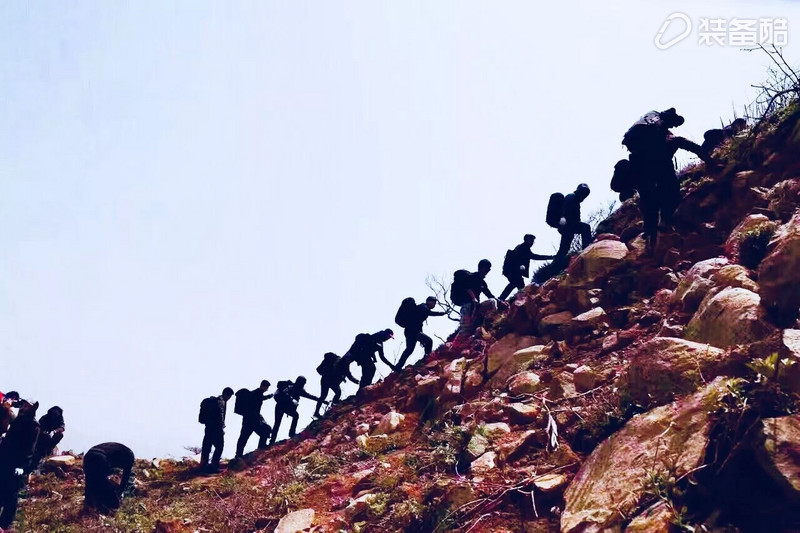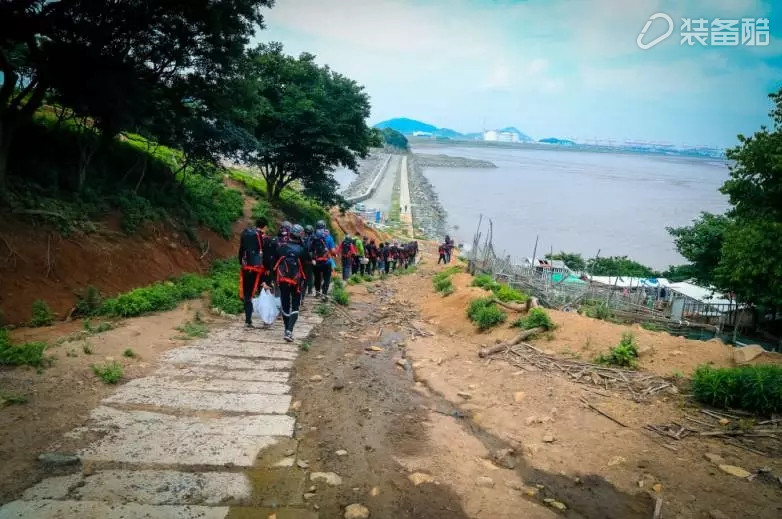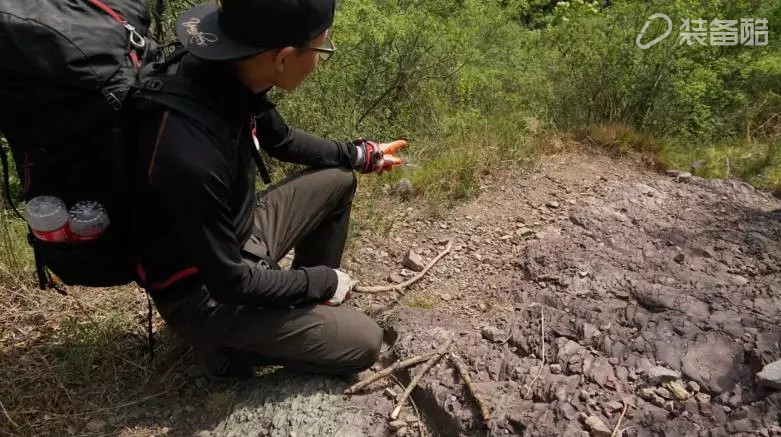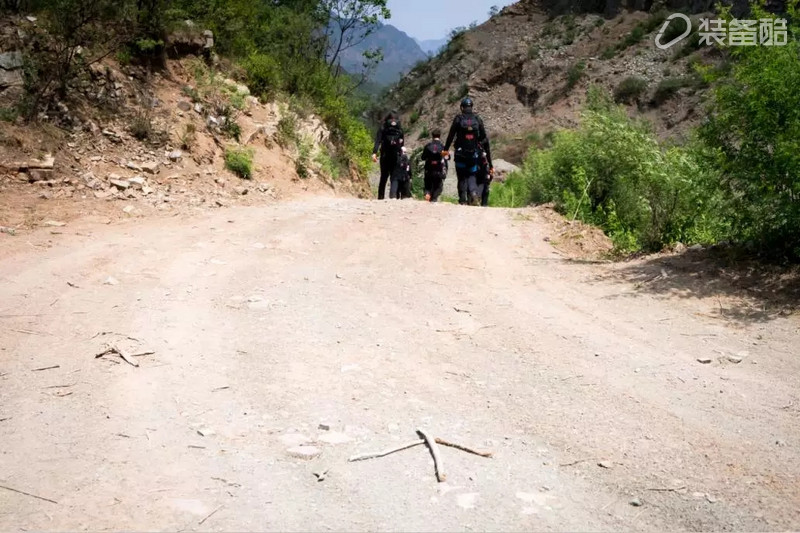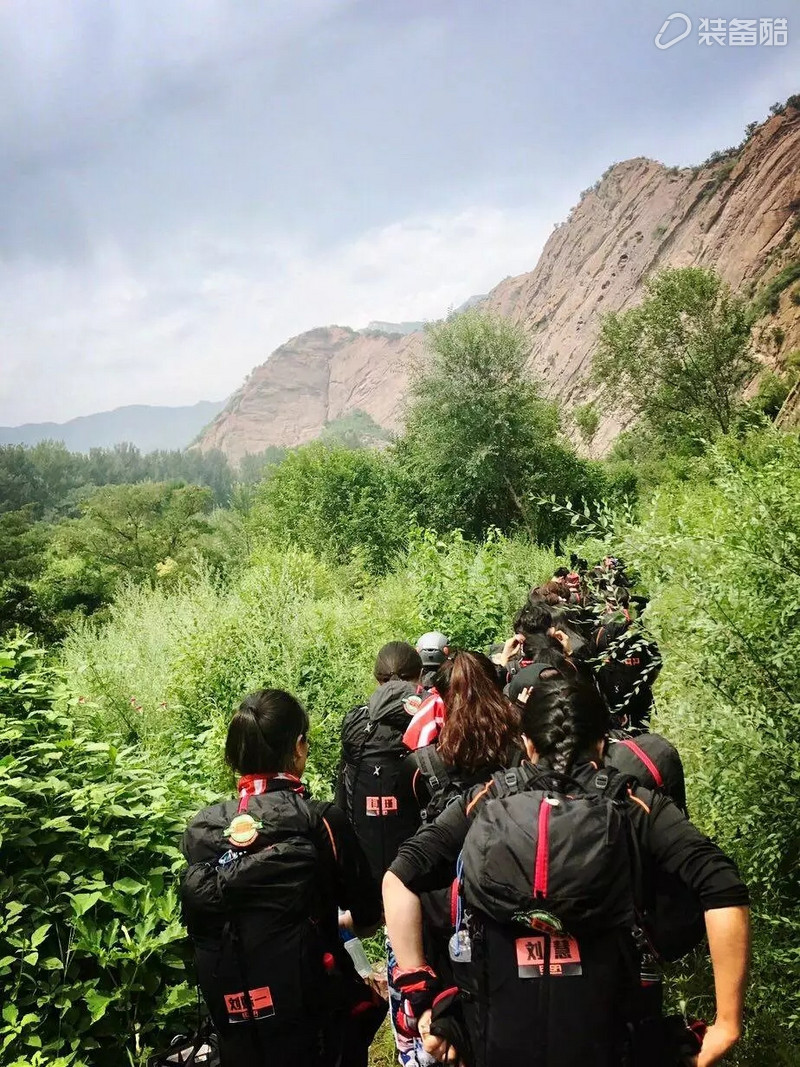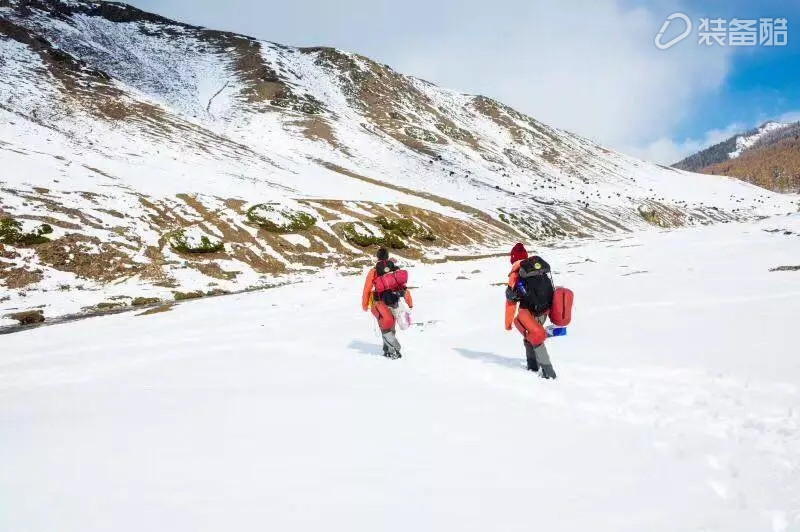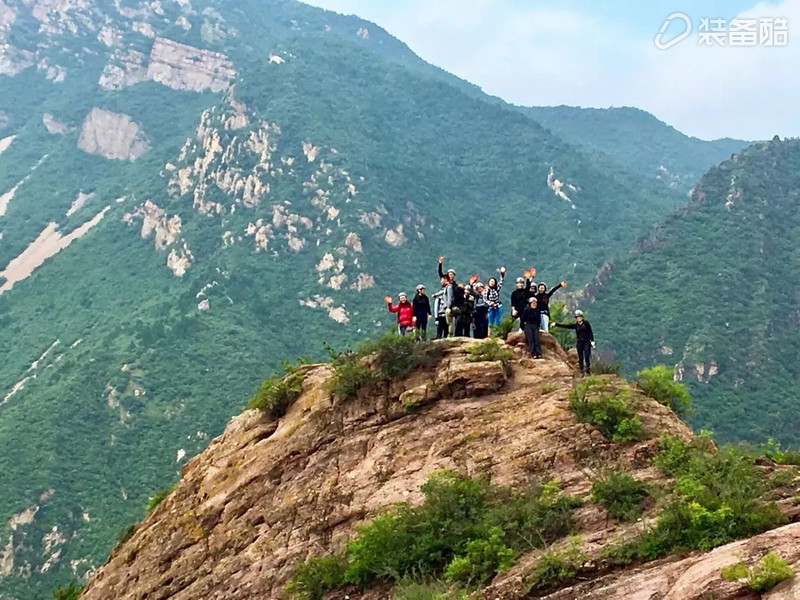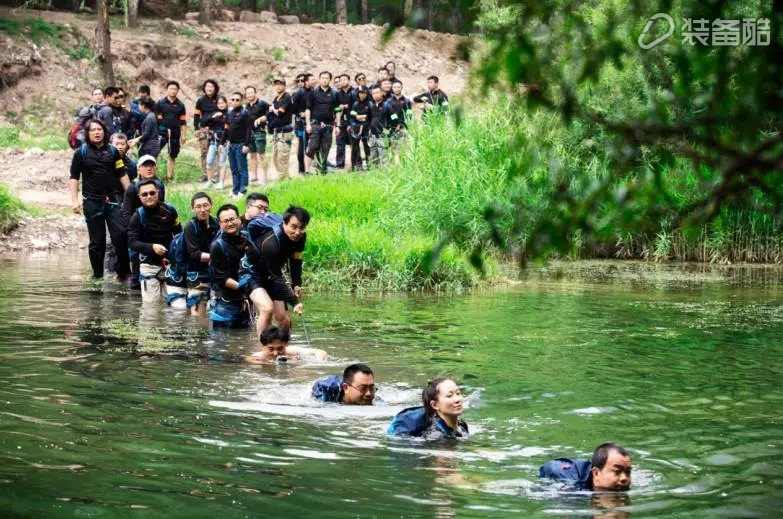Dry goods | 7 kinds of different roads, 7 kinds of hiking skills: the original walk also has routines
Trekking is sure to be an indispensable part of the Bell Outdoor Survival Camp and various outdoor courses on the outdoor planet. Because the courses of the Bell Survival Training Camp are all in a pure wilderness environment, do not think of the mature scenic spots like that! What you may face is walking through various natural environments. If you can master the skills of walking on different roads, you can save more energy in the course. What's more important is to avoid unnecessary damage to the body. Today, the Sorority has come to give everyone a look at the categories. These 7 common roads have their own hiking skills. 1 flagstone pavement Road features This type of road surface is mainly found in stony cliffs, steep cliffs or stone faults, in the base rock exposed area of ​​the mountain, in the formation of a whole block of stone, or in the formation of stone surfaces, and also as a paved stone pavement. Because the road surface is smooth and there are many mosses, it is easy to skid, and if accidents occur due to rain or snow, it is easy to fall, stumble, and severely fracture. Walking experience After the rain, in addition to wearing non-slip shoes, the mood should be relaxed. When walking, the center of gravity should not be too far, and the direction of gravity should be perpendicular to the slate on the ground. Use trekking poles as much as possible. When carrying a large bag, the center of gravity of the bag should be below the middle, and try to hold the wall or the tree as far as possible. Be sure to use trekking poles when you are downhill and focus slightly forward. The feet fall as far as possible on the gap between the slate, or on the roadside vegetation. There is a little distance between two people to prevent one person from falling and then shoveling several. After the snow, if professional equipment, it is best to use four-toothed crampons, if there is no professional equipment, feet must fall on the roadside roots or vegetation, trekking poles are essential, of course, no trekking poles can also find the length of the size Suitable for branches and sticks instead. 2 stone pavement Road features The so-called stone-jumping is no obvious road. The so-called "road" is mainly formed by the valley gully, which is formed by long-term rain erosion and flash floods. There are roads but there are roads but the surrounding agricultural land, farmers in the cultivation of the stones in the ground will be thrown out and piled up on the road, in the long run will make a road to become the size of the stone road, walking on this kind of road, you need Jumping and jumping on the stones, the spun yarns, creeks, and boulder staggered and staggered. Walking experience Overcoming the fear of jumping stone is the most important, which requires attention. In the rainy season, before the heavy rain comes, do not go to the canyon to jump stone after the heavy rain has just passed out, beware of flash floods. Prepare a pair of hard-soled climbing shoes at the end. Before jumping off the stone, check whether the laces are loose. Then tighten the backpack shoulder strap and belt so that the backpack is close to the back so that the backpack will not shake and the center of gravity will not be steady when jumping. Caused to slip. When walking on stone pavement, the eyes should pay attention to observing the situation in front of them, accurately determine the next foothold, and pay attention to observing the long-term trace marks left on certain stones. In addition, be sure to clean the soles of your shoes. If your soles have sand, be careful with your knees and incisors. 3 Dirt pavement Road features This type of road surface is the most common, and the main reason for this is the weathering of the stone and the uncovered ground that has formed through people's long walks. Maybe you think this is the best way to go, what can be noted! It is such a mistake. In the rainy season, this kind of road is the legendary dirt road. It is very easy to fall and hurt your knee. Walking experience After sun exposure, the surface of the dirt road has been dried, but in fact it has already sucked enough water. At this time, it is very easy to get dangerous when going up and down the mountain. When walking on this kind of road, the soles must be gripped and the trekking poles must be fully utilized. The fulcrum, so as not to pay attention to step deep into the mud. In addition, there is a large temperature difference between day and night in spring and autumn. After the rain and snow days, the earth road surface is very easy to freeze, and the risk factor is relatively high. When this situation occurs, we must make full use of trekking poles and things that can be climbed. Pay attention to the time when climbing objects. It is very important to ensure that the fulcrum is solid. 4 Bushes Road features There are many kinds of bushes, which can be roughly divided into natural bushes and artificial reforestation bushes. Natural shrubs are mainly distributed in dense jungles. There are many types of shrubs and they are relatively low. Generally, the soil is soft and slippery, and there may be swamps. The risk is greater. The artificial shrubs are mainly distributed on dry hillsides, which are man-made. For wind and soil conservation, the land is generally dry and contains a lot of stone sand. It looks like it is hard. Walking experience Take bushes, hats, and pull locks on the jackets to keep the distance between the players at least 1.5 meters away to prevent the teammates who had fallen in front of them to bounce back and hurt themselves. Always remind the back of the teammates that it is easy to get lost if you are too far away! It's best to go through the natural bushes with auxiliary equipment and experienced team leaders or local guides to explore the road first. Pay attention to the shrubs with more stings and more mosquitoes. It is recommended to wear them. High-slip soles, thick, and rugged jungle boots, wear long-sleeved, trousers, pay attention to the protection of the face. Artificial forest bushes are taller and more thorny than natural shrubs and bushes. It is advisable to prepare gloves (best leather), long-sleeved high-neck scratch-resistant trousers and good non-slip climbing shoes, and try to walk on such bushes. If the soil is not slippery and the road is wide, it is best to support branches that are fresh and able to support hand strength. Change the hand to support the branches firmly and keep them steady. 5 Snow crossing Road features Snowy roads are formed due to snowfall. Due to snow cover, terrain and road conditions cannot be judged. The situation will be complicated. The snow leads to slippery weather, high resistance and inconvenience to walk. Walking experience When walking on snow, or walking on a long period of snow, the most important thing is to keep pace at a small pace and keep pace with your own pace. In the snow, go up and pick the place where the snow is hard. When walking on soft snow for a long time, stride and shorten the time to walk in the snow. When you walk, you have to step back a little and then step up and step forward. Feet retreat is to make snow shoes before there is room for movement, when you take a step forward, you can also play a role in snow. 1. If the snow has only reached the level of buried shoes, it will hardly affect the pace and can be walked on like a flat surface. (When the snow is higher than the knee, it's only a lot of energy to take a step. Not to mention the fatigue and drowsiness )). 2. If the snow is deep in the waist, you have to use your feet and waist to push the snow in front of you and take a step-by-step approach, the so-called "method of removing snow," to minimize fatigue. The body (especially the upper body) tends to move forward, relying on his own weight and his own weight to push the snow forward. 3. If several people team up and walk in snow-covered snow below the knee, the footsteps need to overlap with the leader's footprints. This is more cluttering than walking in twos and threes, and the fatigue level will be lower. Walking in the soft or snow-covered snow, wearing snow shoes is not afraid of the feet will fall into the snow, and can easily walk in the snow. Walking on snowy slopes requires more attention. Snow slopes are steeper, more difficult to walk, and the snow covers the ground. Not only do you have to guard against cracks, but also be careful not to collapse the snow. At the junction of ice and snow and snow-covered slopes, the snow is often very deep and must be grouped (2 to 3 teams) to pass the action. When climbing a slope, it is necessary to take a place where there are obvious cracks. When passing through the snow bridge, the open-ended explored the snow bridge and made it through. If the snow is soft and you have to pass it, you should go ahead. To step forward, use the forefoot of your feet to step on the snow and step on the steps to move the rear feet. If you accidentally slip, you should immediately lie down and prevent it from falling. Go hot, do not quench your thirst with ice and snow, suddenly devour ice and snow, easy to get throat inflammation. In fact, when the thirst is severely damaged, it can be melted with ice and sip, so as not to swallow in the stomach, the moisture will increase the burden on the body's circulatory organs and affect physical strength. 6 Mountain walking Road features Mountains often consist of undulating hills or ravines, with creeks, cliffs or forest groves. The road surface is often complex and there may be stone roads, mud roads, jumping stones, shrubs, etc. in front, and a variety of walking skills need to be comprehensively applied. Walking experience In the mountains, in order to avoid disorientation, save physical strength, improve the speed of progress, and strive to have a path to not cross the mountains, there is no road to take the road. If there are no roads, you can choose to travel on the vertical hills, ridges, mountainsides, and the edges of rivers, as well as on the topography of trees, thin forests, large gaps, and low grass. Generally do not go deep deep valleys and lush grass, vines and intertwined places, and strive to take the beam does not walk the ditch, do not walk horizontally. The march should follow the principle of strides, and so does the mountains. If we increase the pace, we will take three steps and make two steps. If we go down tens of kilometers, we can take many steps and save a lot of energy. When tired, apply a relaxed, slow walk to rest instead of stopping for a minute or tens of meters as you walk slowly. Walking in the mountains, you will often encounter various rock slopes and steep walls. Therefore, climbing the rock is the main skill of climbing. Before climbing the rock, carefully observe the rock, carefully identify the quality of the rock and the degree of weathering, and then determine the direction of the climb and the route of passage. The most basic method of climbing a rock is the "fixed three points" method, which requires that the climber's hands and feet do a good job. After both hands or feet are fixed, move the other points again so that the body's center of gravity gradually rises. When using this method, it is necessary to prevent jumps and rapid advances, and to avoid the two points moving at the same time, and be sure to be stable, light, and fast. According to your own situation, choose the most suitable distance and the most stable pivot point, and do not stride forward. Grab and go too far. Do not overestimate your physical strength while walking in the mountains. If you are tired, you should rest in time. Do not rest until you are tired and rest. It is not easy to recover your strength. The correct way is to take a long walk, relax slowly, or stop for a rest and adjust your breathing. When standing and resting, do not remove the backpack. You can support a wooden stick under the backpack to reduce the weight. If the weather is cold, do not take a rest on the stone. The stone will quickly absorb the body's heat. 7 River crossing Road features River crossing is a problem that may be encountered in outdoor trekking. Usually we can rely on maps to determine whether there are large rivers in the crossing area. However, in the more complex topography, especially where there is a large elevation difference between elevations and river valleys, one looks like a river. Small streams often become barriers to crossing. In times of heavy rains, small creeks that could not constitute deterrence may become a big flood. Therefore, crossing the river must be carefully chosen across the river. Walking experience The best way is to find a bridge to pass or ask the locals to understand the location of the bridge, and be prepared to hike through the river when it is a last resort. When crossing the river, the first job is to carefully observe the flow of water. With slow water flow, you may choose to spend more shallowly and land on shores that are easy to land. And just above or beside the waterfall, the river is usually deep and has a lot of water. Never cross it. In the narrow upper reaches of the river, it may be feasible to drown across the river - but first try to use the poles to try the depth of the river. There may be rocks that can be settled, or rocks can be placed artificially to help them cross the river. The rivers outside the Triangle are usually rough and the river surface is very wide. Some rivers may even be affected by tides. Do not cross over there. Unless there are rafts or floating boats, they should still go upstream to find a suitable section of the river. On a wide river, when there is no alternative but the conditions and capabilities, it is possible to tie up rafts to cross the river. Only when the river is very shallow and you only wet your shoes and socks, can you consider drowning across the river. When wading across the river, it is generally necessary to use a diagonal line to cross the river, that is, to set the landing goal in the downstream direction. Crossing the river itself is a very dangerous thing. You should wear socks and wading through the water. In addition, taking a stick with a stick, it is easier to achieve balance in the upstream. Cables (climbing ropes) are also a good tool. One end of the rope is fixed on the river bank, and the other end is tied to the waist of the front-line person. People walking behind are also more secure. If the water depth and waist, unless the water flow is particularly slow, it is difficult to move, let alone cross the river. Back to the other side, the body has a slanted angle with the river, and the water will help you to move to the other side. Steps should not be too big and shuffling away. Test the depth of the river with a stick and check if the landing is reliable. The rapids should try to avoid direct wading through. When encountering non-needs, you should prepare thick and long wooden sticks, push the rocks in the middle of the river, and use it as a center to draw a half-circle diagonally. Trousers or climbing pontoons can be used instead of swimming rings, and round logs or wood chips can be used to benefit the river. This article is reproduced from: Gravel Outdoor Featured
Microfiber dish drying mats are typically more absorbent than cotton and dry very quickly, making them a great option if you're looking for drying mats and palcemat to drying the water in any place. The microfiber fabric use for mats are super absorbent,thick and have a very short drying time.You can have many choices on different color and style.
Microfiber dish drying mat,microfiber drainer mat,microfiber mat for dish drainer jiangsu qiyun cleaning knitting product co.,ltd , https://www.jarfrry.com